Astroloma is a historically recognised genus of about 25 species of flowering plants in the family Ericaceae and endemic to Australia.

Styphelia is a genus of shrubs in the family Ericaceae, native from Indo-China through the Pacific to Australia. Most have minute or small leaves with a sharp tip, single, tube-shaped flowers arranged in leaf axils and with the ends of the petals rolled back with hairs in the inside of the tube.

Brachyloma is a genus of about 16 species of flowering plants in the family Ericaceae and is endemic to Australia. Plants in the genus Brachyloma are shrubs with more or less erect leaves and bisexual flowers usually arranged singly in leaf axils, the 5 petals fused to form a cylindrical or bell-shaped tube, the stamens sometimes enclosed in the petal tube.
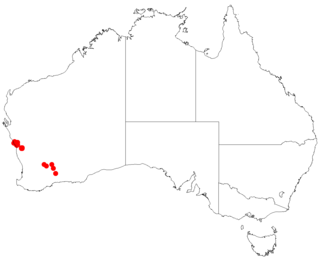
Styphelia marginata, commonly known as thick-margined leucopogon, is a species of flowering plant in the heath family Ericaceae and is endemic to the south-west of Western Australia. It is a dwarf shrub with lance-shaped leaves and white, tube-shaped flowers.
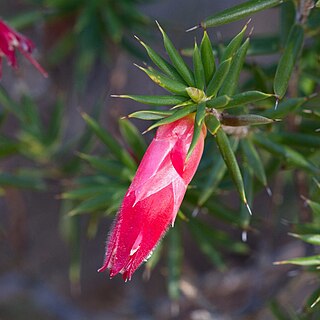
Stenanthera conostephioides, commonly known as flame heath, is a species of small shrub that is endemic to south-eastern continental Australia. It has linear to lance-shaped leaves, red, tubular flowers and green, oval fruit turning dark red.

Styphelia planifolia is a species of flowering plant in the heath family Ericaceae and is endemic to the south-west of Western Australia. It is a bushy shrub with narrowly oblong or lance-shaped leaves with a small, sharp point on the tip, and white, tube-shaped flowers.

Styphelia crassifolia is a plant in the family Ericaceae native to Western Australia. It was first described in 1845 as Leucopogon crassifolius by Otto Wilhelm Sonder. In 1867 Ferdinand von Mueller transferred it to the genus, Styphelia, but the accepted name continued to be Leucopogon crassifolius. However, in 2020, with a publication concerning the phylogeny of Styphelia by Crayn and others, the name Styphelia crassifolia was accepted by the Herbarium of Western Australia.
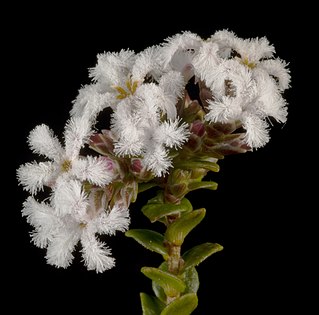
Leucopogon cordatus is a small plant in the family Ericaceae and is endemic to Western Australia. It is an erect spreading shrub, typically growing to a height of 0.35–1 m on sandy soils often over granite, laterite or limestone. Its white flowers may be seen from July to November.
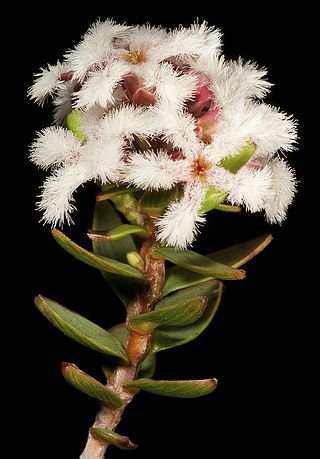
Leucopogon polymorphus is a species of flowering plant in the heath family Ericaceae and is endemic to near-coastal areas of south-western Western Australia. It is a shrub with egg-shaped to lance-shaped or almost linear leaves and short, dense spines of white, tube-shaped flowers.

Styphelia stomarrhena is a small shrub species in the family Ericaceae. It is found in Western Australia.
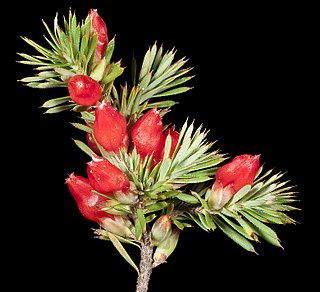
Styphelia tortifolia is a small shrub species in the family Ericaceae. It is found in Western Australia.
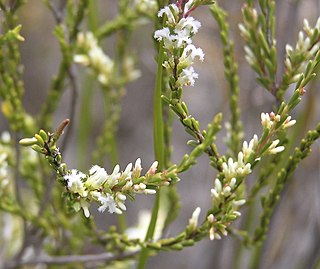
Leucopogon corynocarpus is a small plant in the family Ericaceae and is endemic to Western Australia.
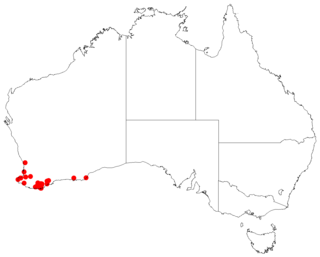
Leucopogon elatior is a species of flowering plant in the heath family Ericaceae and is endemic to the south-west of Western Australia. It is a slender, erect or straggly shrub with broadly egg-shaped leaves, and white, tube-shaped flowers.
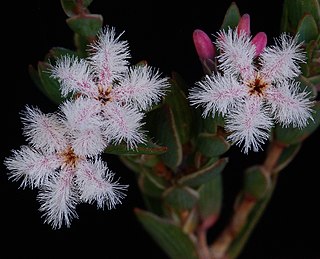
Leucopogon elegans is a species of flowering plant in the heath family Ericaceae and is endemic to the south-west of Western Australia. It is a spreading shrub with egg-shaped leaves, and white or pink, tube-shaped flowers densely bearded on the inside.

Leucopogon flavescens is a species of flowering plant in the heath family Ericaceae and is endemic to the south-west of Western Australia. It is a shrub with oblong leaves and white, tube-shaped flowers that are densely bearded on the inside.

Conostephium preissii is a species of flowering plant in the family Ericaceae and is endemic to the southwest of Western Australia. It is an erect shrub with many stems, egg-shaped to oblong leaves and white and purplish to reddish-pink flowers.
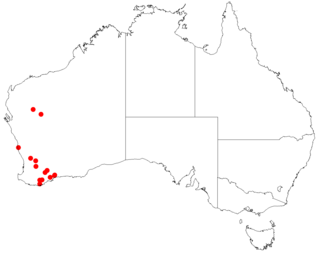
Leucopogon ovalifolius is a species of flowering plant in the heath family Ericaceae and is endemic to the south-west of Western Australia. It is an erect or straggling shrub that typically grows to a height of 1–2 ft (0.30–0.61 m). Its leaves are egg-shaped with the narrower end towards the base, 4.2–6.3 mm (0.17–0.25 in) long and sessile. The flowers are arranged in pairs or threes in leaf axils on a short peduncle with tiny bracts, and bracteoles less than half as long as the sepals. The sepals are about 2 mm (0.079 in) long, the petals 4.2–5.3 mm (0.17–0.21 in) long and joined at the base, the lobes longer than the petal tube.
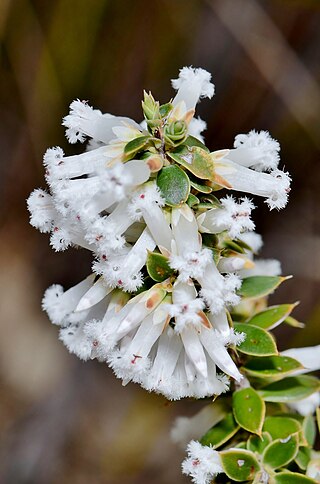
Leucopogon oxycedrus is a species of flowering plant in the heath family Ericaceae and is endemic to the south-west of Western Australia. It is an erect shrub with variably-shaped leaves with a small, sharp point on the tip, and white, pink or red, tube-shaped flowers.
Styphelia chlorantha is a species of flowering plant in the heath family Ericaceae and is endemic to a small area of Western Australia. It is a low, spreading shrub with erect, narrowly egg-shaped to egg-shaped leaves with the narrower end towards the base, and green, tube-shaped flowers arranged singly in leaf axils.

Styphelia acervata is a species of flowering plant in the heath family Ericaceae and is endemic to the south-west of Western Australia. It is a dense, prostrate, mat-forming shrub with erect, narrowly egg-shaped leaves, and cream-coloured and greenish tube-shaped flowers.



















